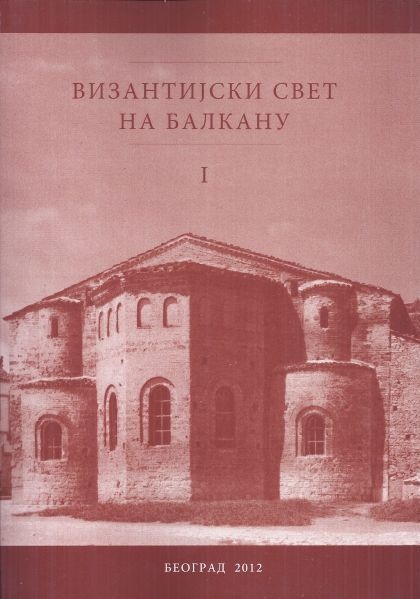Христолошки значај представе премудрости у цркви Свете Софије Охриду
The Christological Significance of the Presentation of Divine Wisdom in the Church of St. Sophia in Ohrid
Author(s): Zdravko Peno
Subject(s): Cultural history, Visual Arts, Eastern Orthodoxy
Published by: Vizantološki institut SANU
Summary/Abstract: The countenance and role of portraits on the partly preserved fresco in St. Sofia church in Ohrid showing manifestation of Divine Wisdom have been differently interpreted. Starting from the hagiography of St. Basil the Great, some art historians have interpreted this fresco as Christ’s and holy Apostle’s epiphany to St. Basil the Great, who is being called to the service in the holy altar. Other art historians have envisaged the composition in a wider context, primarily pointing to a special place of St. Paul in the apostolic choir, as well as to a special bond between Paul the Apostle, the most meritorious New Testament herald of the Holy Wisdom, and his best hermeneutist, St. John Chrysostom. It is certain that the painter of the St. Sofia Church found an inspiration for the presentation of Holy Wisdom in sophiological texts of the Old Testament, in St. Paul’s epistles as well as in the testimonies of St. Proclus of Constantinople re corded in the Hagiography of St. John Chrysostom. The representation of the Holy Wisdom as a girl stems from the tradition relying on the King Solomon’s tales, in which the Holy Wisdom builds a home and summons people to eat bread and wine she has prepared (9, 1–5). In this context, the representation of the Holy Wisdom should not be interpreted regardless of the image of Jacob’s ladder, since this representation, being placed in the altar symbolizing Heaven, makes present the very incarnation of the Son who came down from Heaven (John 3, 13). The liturgical context of Holy Wisdom representation is underlined by the image of St. Basil the Great, certainly the most significant Divine Liturgy maker/creator, beside St. John Chrysostom. Both of these compositions, the Jacob’s ladder and Service of St. Basil the Great, related to the epiphany of Holy Wisdom to St. John Chrysostom, enclose both aspects of “Divine Economy”: the coming of Christ into the world and his Eucharistic sacrifice in Liturgy. The position of Holy Wisdom in the altar suggests not only “symbolic interpretation of an exceptional rhetorical gift” nor just “Divine inspiration — a dream of St. John Chrysostom” since both the rhetorical gift and divine inspiration need the same life-giving source — the Holy Eucharist. The participation in the agape that Holy Wisdom prepared (as it is stated in the 3rd line of the 9th chapter of King Solomon’s tales) refers to, according to St. John of Damascus, ineffable future goods that Holy Wisdom would give to those who take her Body as their meaningful food and her Blood as their meaningful drink. The Holy Wisdom’s agape, which was prepared long before, in the words of St. Maximus the Confessor, is a final destination and purpose of the painting in the Church of St. Sofia in Ohrid.
Book: Византијски свет на Балкану I-II
- Page Range: 137-146
- Page Count: 10
- Publication Year: 2012
- Language: Serbian
- Content File-PDF

